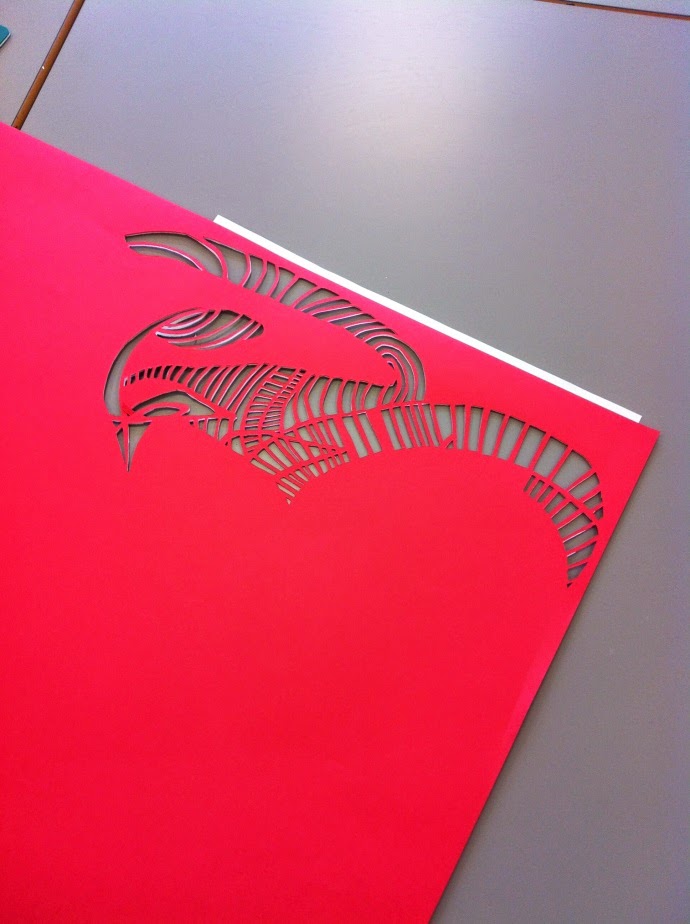My final piece is an installation of Petri-dishes that shows an abstract illustration of bacteria through different layers. The bacteria is not just growing in one dish like in a science experiment but has grown across all the dishes in the installation and even outside of them.
I used actual, scientific Petri-dishes which were made of a thin but solid clear plastic, the use of these in the artwork was inspired by artist Klari Reis but I also wanted to use them to emphasise the fact that the illustration inside them was of bacteria.
I had created the illustration of bacteria by splatting various coloured inks onto a sheet of card before drawing into with fine liners. The colours of inks I used were based upon a certain work of Reis's that I had really liked the colour scheme of. My drawing style had been developed in this project by the influences of other artists I researched. Melissa Bolger's was the first artist I looked at who had combined splats of colour with line drawing and Chad Wasser used a similar method. In the illustration I used for my final piece, the shapes and decorative techniques mostly came from research into Crystal Wagner but I needed to have studied the other artists in order to understand how to combine the style with the ink. Alan Bur Johnson's work inspired me to overlap the dishes as he does that with his own transparent circle installations.
An alternative way to which I could have put my design on to acetate would have been to work straight onto it with the inks and pen drawing. I had experimented with this and found that the inks looked very effective and more liquid like. The issue was that when it came to drawing into the ink splats, I found it difficult to be as detailed and definite as it would have been drawing it straight onto paper. In a similar way I could have worked straight on top of the PVA glue with pen but I would have had the same problem.
One improvement I would have made to the final piece would have been to make the ink splats in the PVA glue in the dishes more spread out with lighter colours. Some parts are just thick clumps of the ink and this didn't look right when it dried. I am really quite happy with how it came together. The idea of the work is quite complex and it holds many different layers of ink and drawings which I aimed to make connected with each other. I think that because I kept the installation quite neat and precise in various aspects of it, it made it seem quite clear and more understandable. There is still a lot of room for experimentation with this method I used to produce it, I feel like I found a good medium between complexity and simpleness.
For me, the most successful part in this project was the development of my drawings, I think using the styles of artists Chad Wasser and Crystal Wagner came natural to me and I really quite enjoyed developing the styles so that they were more my own and by combining them. I did also like the work I did with May Van Millingen although this was very different to the rest of the project, I was happy with the outcomes I had produced by digitally applying colour to the fine liner drawings.
If I had more time, I would have liked to have researched more into actual bacteria or viruses. This would have allowed me to make illustrations that were still abstract but were more related to the biological matter. I could have added a deeper meaning to my outcome if it was based upon a specific type of virus.
Because 'Biomorphic Forms' covered such a huge range of topics, I would have liked to have narrowed it down to a more refined category at the start of the project if I were to do it again. I looked at floral based artist Yellena James and the mushroom studies of Anna Sebestova when these hardly related to the bacteria I had based my final piece upon. It wasn't that I didn't like my work that was inspired by them, just that it didn't aid me in producing my final outcome.




































